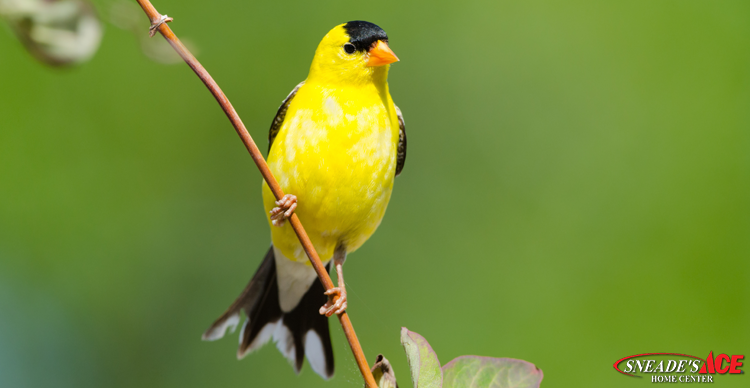
As I look out my windows and see “Lots of Gold–Gold Finches” on a nearby feeder. Many people call what I’m looking at “wild canaries.” The male’s bright yellow body and long warbling song fit the name well. Check out your favorite field guide, and you’ll soon discover that these common familiar birds are formally called American Gold Finches.
When they have a place to perch and fresh seed, gold finches will put on quite a show.
Gold Finches are recognized by their black wings and tail and black cap. Females have a greenish and a yellow front and no cap.
In early fall, gold finches molt. That is , they replace their worn, tattered feathers with a set of fresh, new feathers. The appearance of these beautiful creatures after molting changes drastically at this time. The brilliant yellow body feathers are replaced by dull brownish plumes and the stricking black cap disappears. Females also molt, but their appearance doesn’t change much. As a result, it’s harder to tell males and females apart and many folks assume their gold finches have gone away and mistake them for other birds during fall and winter.
